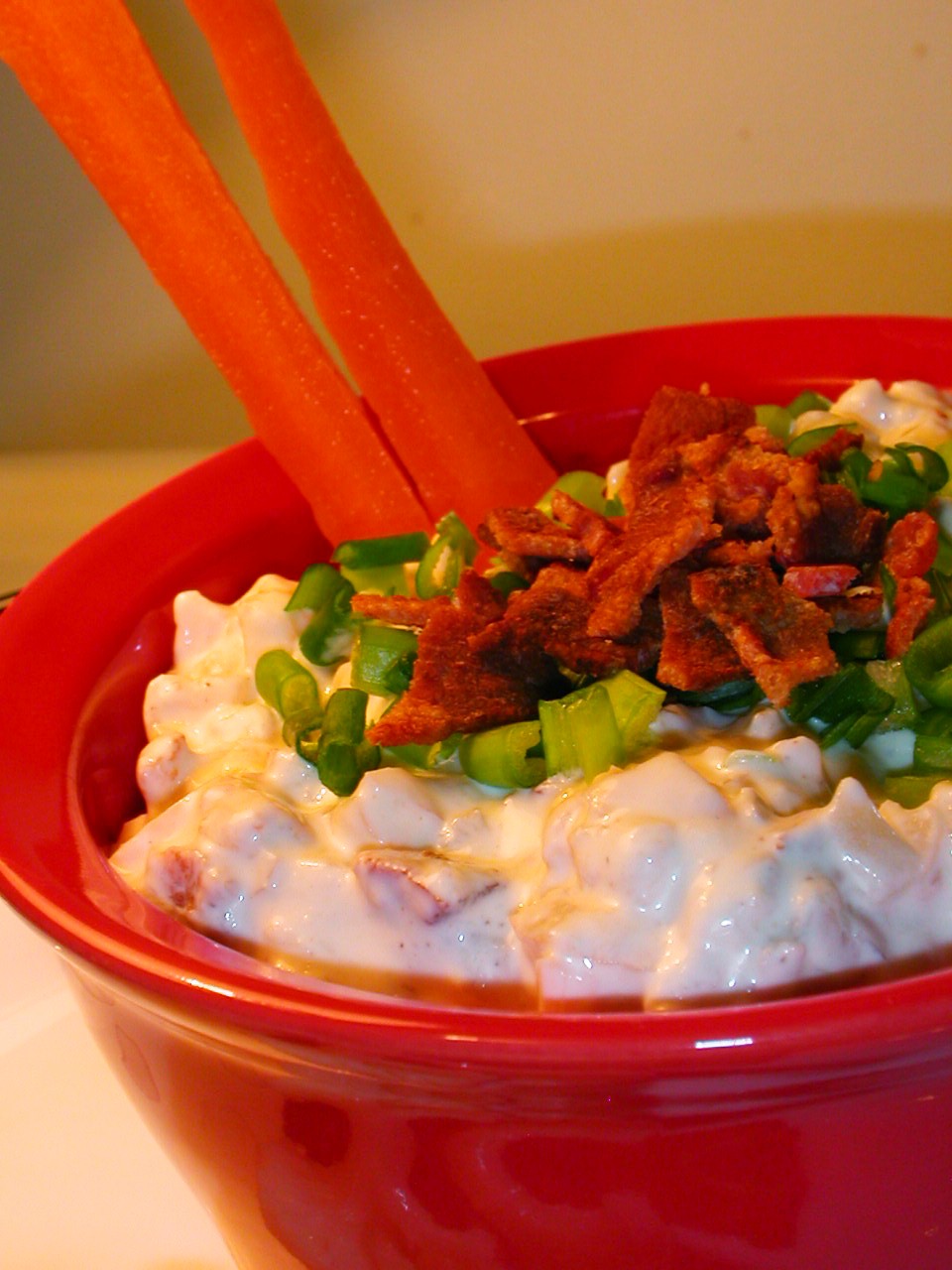This is the first Daring Baker recipe that has not only been from a cookbook I own, but was a recipe that I had planned to make soon anyway. Since football season started a few weeks ago, I’ve made Sunday into a snack day instead of serving an actual meal, which gives me a chance to play around with appetizer and dip recipes that I normally can’t (healthily) work into our routine.
The recipe itself was pretty simple. This is a rare recipe for Peter Reinhart in that it doesn’t require a pre-ferment, so the recipe can be completed in one day. The dough was easy to work with. I rolled it out right on my silicone baking mat, and then just moved the mat to a baking pan to bake it, so I never had to transfer just the sheet of dough.
I think Reinhart’s directions on rolling out the dough are off. I rolled the dough out to exactly the dimensions he recommends, but my “crackers” ended up far too thick. Reinhart refers to the rolled-out dough as “paper-thin” at one point, and mine certainly wasn’t. In the future, I’ll roll the dough out possibly twice as thin, so they’re more like crackers and less like little toasts.
I cheated on the dip. After I made it, I saw in the rules that we were supposed to make something that was gluten-free and vegan, but my pesto dip is based on goat cheese. But it’s so good! I have no regrets on breaking the rules if I get something so tasty out of it.
This challenge was a fun one – I always enjoy making yeast breads, and as I said, I’d been interested in this recipe for a while. The hosts this month, Natalie and Shel, also give directions for a gluten-free version, which I may try for my gluten-intolerant grandmother next time I see her. I’m always on the lookout for good gluten-free recipes.
Lavash Crackers (from Peter Reinhart’s The Bread Baker’s Apprentice)
Makes 1 sheet pan of crackers
1½ cups (6.75 ounces) unbleached bread flour
½ tsp salt
½ tsp instant yeast
1 tablespoons sugar
1 tablespoon vegetable oil
⅓ to ½ cup + 2 tablespoons (3 to 4 ounces) water, at room temperature
Poppy seeds, sesame seeds, paprika, cumin seeds, caraway seeds, or kosher salt for toppings
1. In a mixing bowl, stir together the flour, salt yeast, sugar, oil, and just enough water to bring everything together into a ball. You may not need the full ½ cup + 2 tablespoons of water, but be prepared to use it all if needed.
2. Sprinkle some flour on the counter and transfer the dough to the counter. Knead for about 10 minutes, or until the ingredients are evenly distributed. The dough should pass the windowpane test and register 77 degrees to 81 degrees Fahrenheit. The dough should be firmer than French bread dough, but not quite as firm as bagel dough (what I call medium-firm dough), satiny to the touch, not tacky, and supple enough to stretch when pulled. Lightly oil a bowl and transfer the dough to the bowl, rolling it around to coat it with oil. Cover the bowl with plastic wrap.
3. Ferment at room temperature for 90 minutes, or until the dough doubles in size. (You can also retard the dough overnight in the refrigerator immediately after kneading or mixing).
4. Mist the counter lightly with spray oil and transfer the dough to the counter. Press the dough into a square with your hand and dust the top of the dough lightly with flour. Roll it out with a rolling pin into a paper thin sheet about 15 inches by 12 inches. You may have to stop from time to time so that the gluten can relax. At these times, lift the dough from the counter and wave it a little, and then lay it back down. Cover it with a towel or plastic wrap while it relaxes. When it is the desired thinness, let the dough relax for 5 minutes. Line a sheet pan with baking parchment. Carefully lift the sheet of dough and lay it on the parchment. If it overlaps the edge of the pan, snip off the excess with scissors.
5. Preheat the oven to 350 degrees Fahrenheit with the oven rack on the middle shelf. Mist the top of the dough with water and sprinkle a covering of seeds or spices on the dough (such as alternating rows of poppy seeds, sesame seeds, paprika, cumin seeds, caraway seeds, kosher or pretzel salt, etc.) Be careful with spices and salt – a little goes a long way. If you want to precut the cracker, use a pizza cutter (rolling blade) and cut diamonds or rectangles in the dough. You do not need to separate the pieces, as they will snap apart after baking. If you want to make shards, bake the sheet of dough without cutting it first.
5. Bake for 15 to 20 minutes, or until the crackers begin to brown evenly across the top (the time will depend on how thinly and evenly you rolled the dough).
6. When the crackers are baked, remove the pan from the oven and let them cool in the pan for about 10 minutes. You can then snap them apart or snap off shards and serve.
Pesto Goat Cheese Spread (from Gourmet September 2002, but really epicurious.com)
4 ounces soft mild goat cheese at room temperature
2 ounces cream cheese at room temperature
¼ cup pesto
Stir together all ingredients with salt and pepper to taste until smooth.




























